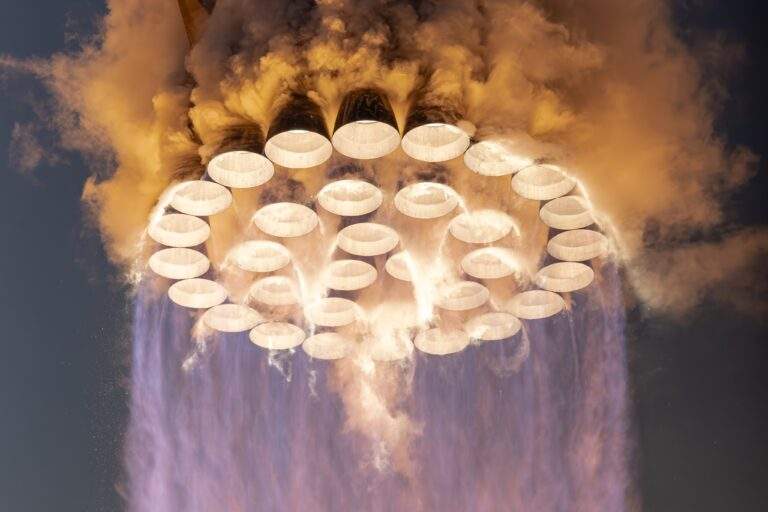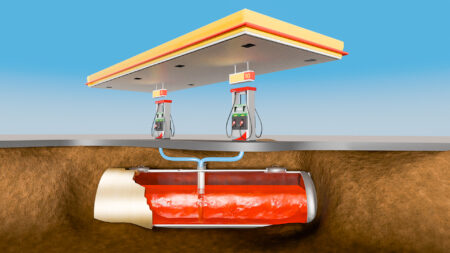Shortly after Apollo 11 touched down on the Moon, Neil Armstrong said “Tranquility Base here, the Eagle has landed”. Tranquility Base was the name that NASA had chosen for the site of the first Moon landing. It’s located in the south-western corner of the Lunar plain called Mare Tranquillitatis or “Sea of Tranquility”.
This is just one out of thousands of names that have been given to geographical features on the Moon. We may not think about it, but having established place names for the Moon will come in really handy once we are able to send more people there. The history of place names here on Earth can be really interesting. There are many reasons why places are named a certain way and why they change over time. This is no different for places on the Lunar surface. But who is in charge of coming up with these names? And are they official?
First map of the Moon
In the year 1610, Galileo released his famous drawings of the Moon. Until then, no one had such a good idea of what the Lunar surface looked like. Looking through one of the world’s very first telescopes, he studied the moon closely and was able to produce drawings which accurately represented the Moon’s harsh features in a way that no one else had ever seen before. Each crater was accurately represented in his drawings. Although Galileo had essentially created the very first map of the Lunar surface, there were no place names on his map.

A more advanced map of the Moon
40 years later, a new map of the Lunar surface was created by astronomers Riccioli and Grimaldi. This map divided the surface up into 8 sections and names like ‘Tranquility’ and ‘Serenity’ were given to the great mountains and flat plains that lay in between. This was helped by the fact that the Moon always faces us with the same face. So we could essentially treat the map of the Moon like a giant disc, which of course it isn’t.
What these ancient astronomers didn’t know was how different the back side of the Moon was. Since it takes much more abuse from meteors, the back side has substantially more craters than the side that faces us. This map quickly became the basis for naming the Lunar features and many of the original names are still used to this day.

Fast forward by a few centuries and we have the birth of spaceflight. In 1959, the Soviets became the first to send a probe to the far side of the moon. This probe successfully imaged the side of the Moon which had never been seen before by humans. This was the first time that humans discovered the harsh surface on the far side of the Moon. With this new perspective of the hidden surface, the Soviets started to name features after Russian Heroes and place names.
Over the next decade, America and The Soviets started to piece together higher quality images of the far side of the Lunar surface whilst continuing to name newly found features. With the limited quality of cameras and satellites at the time, we were able to gain a more in depth understanding of the Moon and how its surface became the way it is. Many of the most notable place names of the Moon came from the Apollo landings. Although NASA often informally names features on the Lunar surface, they don’t actually have any authority to officially assign names to lunar features.
How place names are decided
When naming features on other planetary bodies, each name has to be accepted by the International Astronomical Union. However, it’s not just NASA that can suggest names, ANYONE can submit a name to the IAU as long as it complies with their specific guidelines.
Almost all craters on the Lunar surface must be named after deceased scientists or explorers who have made a significant contribution to their field. The large plains that are so common on the Moon must be given Latin names which describe things like weather and other abstract concepts. The ridges on the surface have to be named specifically after Geoscientists.

Requirements for naming Lunar features
Although these names must be attached to significant people within the science community, the scale of a Lunar feature doesn’t necessarily reflect who it’s named after. Copernicus and Archimedes both have their names attached to spectacularly large craters, whereas other science legends like Galileo and Newton were given features that are much less impressive. Of course it must be much more fulfilling to have your name attached to a larger crater, it’s not like Galileo or Newton can argue over it.
In 1970, the IAU agreed to name one of the widest craters on the Moon ‘Apollo’, and smaller craters within Apollo were named after astronauts from the Apollo 8 and Apollo 11 missions. This was after the very recent success of the Apollo program, having landed the very first humans on the surface of the Moon in 1969. Nearby craters were later named after deceased NASA employees, including the lost crew of Apollo 1 and the two Space Shuttle disasters. The Apollo 1 crew lost their lives during a test in 1967, just 2 years before Apollo 11 touchdown on the Lunar surface.
Although the Moon is the only other celestial object that humans have visited, the process for naming features on other planetary bodies goes much further than the Moon. Perhaps the most likely planet in our solar system that we’ll colonize is Mars.
Due to its atmosphere and presence of water ice, it’s much more likely that we will have lots of people there than on the Moon. Many places on Mars already have names, like the famous Olympus Mons, a volcano two and a half times Mount Everest’s height. These place names help with the navigation of NASA’s rovers currently on the Martian surface.
The IAU is also in charge of naming dwarf planets, exoplanets, satellites, moons, comets, stars, Nebulae And Galaxies. If you’d like to see the enormous amount of place names that have already been given to planets, go to Google Maps, zoom all the way out and you will be able to visit the planets and Moons of our solar system.
So although these names might not be familiar to us now, in the future when space tourism is a reality, places like Apollo, Borman and Lovell might be as common to us as New York, Paris and Tokyo.













Can you be more specific about the content of your article? After reading it, I still have some doubts. Hope you can help me.